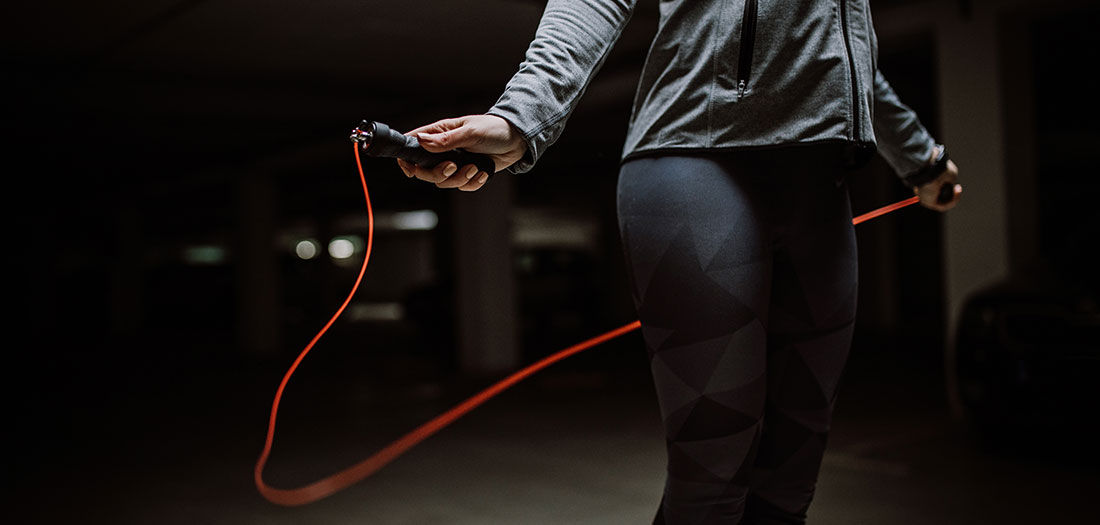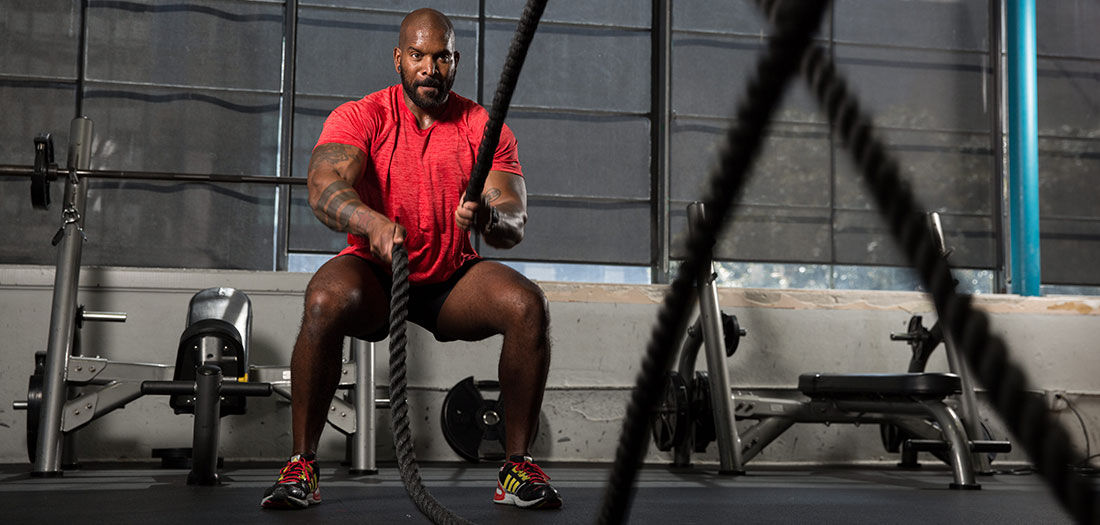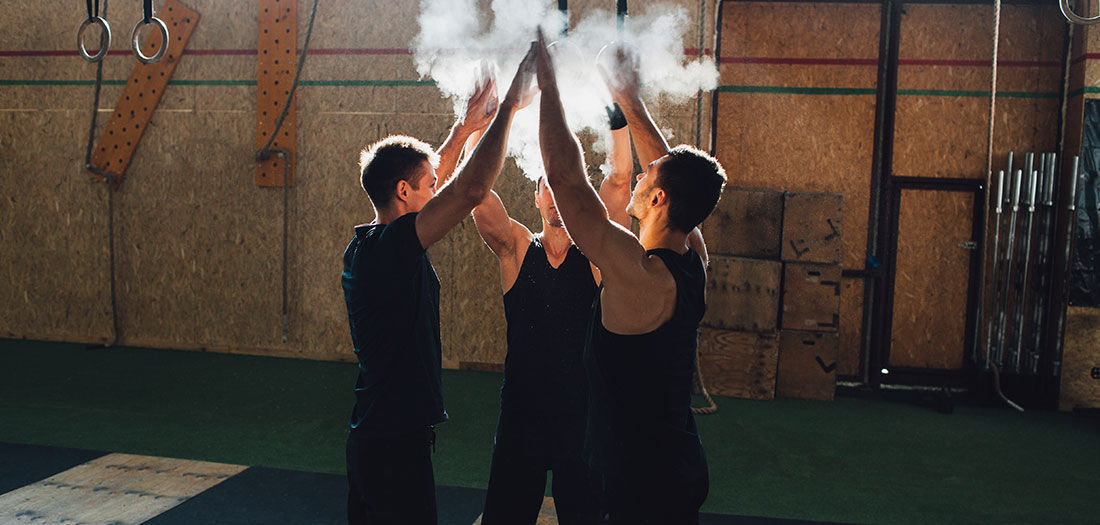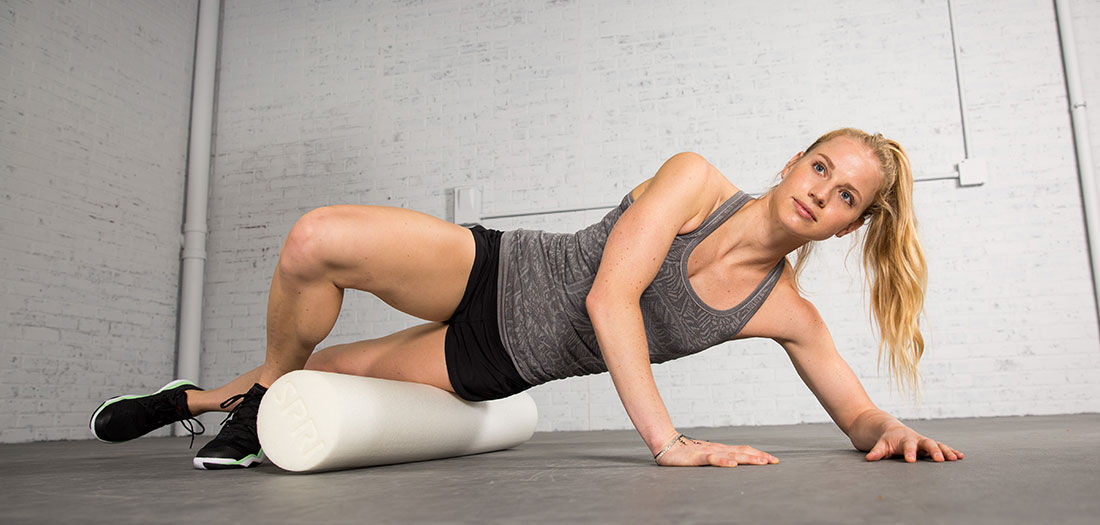While the term athlete “athlete” has generally been used to describe people who compete in individual or team sports, a new category of athlete has emerged in recent years that doesn’t involve competition. Today, members of the military, law enforcement and first responders such as firefighters or paramedics are often described as “tactical athletes” because of the physically demanding nature of their jobs. As a result, the field of tactical strength and conditioning has emerged to provide appropriate exercise and fitness programs to meet the fast-changing nature of these physically demanding jobs.
Exercise programs for tactical athletes and first responders should address a variety of needs, including mobility, movement efficiency, aerobic capacity and power. This is in contrast to a traditional approach to strength training that focuses on only one body part or muscle group at a time. Here, firefighters and tactical strength and conditioning experts share seven tips for designing effective workout programs for first responders.

1. Proper mobility training and dynamic warm-ups are essential for injury prevention.
Joey Figone, a captain with the Menlo Fire Department in Northern California and an ACE Certified Personal Trainer and Peer Fitness Trainer (for firefighters), helps run his department’s training academy. He ensures that mobility and flexibility are key components of the fitness programs for new recruits.
“When speaking with new recruits about fitness, we emphasize that a healthy, functioning body is essential for job longevity,” explains Figone. “To help reduce the risks of injury from performing the physically demanding tasks of the job, we make mobility and flexibility training a key part of the conditioning program at the academy. We provide foam rollers to our recruits and then take the time to teach them how to use them properly. In addition, we teach recruits how to perform a complete full-body dynamic warm-up prior to starting a workout.” Learn how to use foam rollers to help improve mobility and joint range of motion.
Figone explains that they need to account for the daily fire-training schedule when designing programs for firefighters. “When it comes to planning the fitness programs we work inversely proportional to the daily fire training schedule,” he explains. “If the day includes a lecture, then we do a more challenging workout, but if they are doing live fire training, we do a lower-intensity workout. The one constant is that we always perform a complete dynamic warm-up before every workout.” This dynamic warm-up can help you to prepare for any workout or physically demanding activity.
Steve Cruz, an Arizona-based career firefighter and ACE Peer Fitness Trainer, agrees with the need for mobility training for his crews. “In our department, we use mobility exercises for injury prevention and put our members through the Functional Movement Screen on an annual basis in an effort to keep our folks from getting injured,” explains. “It helps us assess and identify both asymmetries and limitations that our personnel may have. We then focus on improving mobility, strengthening stability and teaching proper movement preparation workouts for our guys.” Cruz adds that foam rollers, therapy balls and yoga all play an important role in his own personal fitness program while on duty.” Learn more about the benefits of movement preparation.

2. Strength is the MOST important component of fitness for first responders.
John Hofman, MS, is a Tactical Strength and Conditioning Specialist with Southern California University Health Sciences and specializes in designing fitness programs for firefighters and first responders. When asked about the most important component of fitness for first responders Hofman’s response was unequivocal. “Strength!” he says emphatically. “To reduce injuries on the job, we want to get them strong. Most low-back injuries are due to lifting heavy patients onto the gurneys, which requires high levels of strength and power. We tell firefighters in our program that if you want to be injury free, get strong because the stronger you are, the harder you are to break.”
Because many fire stations don’t have the room (or budget) to buy an extensive amount of exercise equipment, Hoffman uses the following bodyweight exercises to help the firefighters in his program get stronger:
- TRX Back Row. According to Hofman, this exercise “helps offset the poor posture of many first responders that results from being loaded down with up to 85 pounds of equipment.”
- Lateral Step-ups. “Firefighters spend more time on one leg than two,” explains Hofman. “We want to give them specific exercises that can improve both strength and balance.”
- Side Plank. “Because they often work with uneven loads, firefighters can often become unbalanced,” explains Hofman. “This exercise can help strengthen the core and lateral hip muscles like the gluteus medius, which results in a more balanced body.”
Cruz follows the same approach. “The workouts we do for strength include pushes and pulls for the upper body, and squats and hip hinges for the lower body,” he explains. “The equipment we use includes dumbbells, kettlebells, TRX suspension trainers and battle ropes, which allow us to do circuit training while on duty.”
- Battle Ropes Waves. This exercise features 30-second intervals at a fast pace followed by 30 seconds of active rest while performing a plank or body-weight squats.
- Goblet Squats Using Dumbbells. This exercise is performed for 20 to 45 seconds.
- Dumbbell Renegade Rows. Perform this exercise by alternating arms for 20 to 45 seconds.

3. Working as a unit is critical for first responders, so exercises are designed to help promote teamwork for the crews on each shift.
Exercise provides many benefits for firefighters, including the ability to function as a team during extremely stressful situations. As a result, many fire fighting crews make time to exercise together during their shifts.
“Fitness is mission critical to our job,” explains Jess Specht, a battalion chief in the Oceaside, Calif., fire department. “Exercising during their shift helps our crews develop camaraderie and unit cohesion, while preventing many injuries that can occur on the job.”
Cruz agrees. “Exercising together definitely helps to establish unit cohesion and team work within the crews of each shift. In addition, working out together helps our personnel to develop the physical ability to perform the wide variety of job functions necessary for working a scene.”

4. Investing in proper fitness equipment can help fire departments save money in the long run.
In addition to a lack of time, a major obstacle for working out at a fire station is having the proper equipment. Some departments have a budget for purchasing exercise equipment for each station, while other departments simply lack the resources to invest in good equipment. One solution for getting the funds to invest in the proper workout gear is to highlight the fact that exercise can help firefighters prevent a number of physical issues, including back pain, shoulder strains or obesity-related health problems.
When a firefighter gets injured while on duty, a department is affected in two ways. First, it has to pay for the firefighter’s salary while he or she is injured and unable to work. Second, it has to pay overtime for a firefighter to cover the hole in the shift.
“When we proposed our budget to the city council, we highlighted the cost savings from keeping firefighters injury-free and on the job. Our city responded with the budget for purchasing fitness equipment for each of our eight stations,” says Specht. “Each one now has a few cardio machines and a variety of equipment including medicine balls, squat racks, barbells, benches and dumbbells.”

5. There are a number of different ways that crews can make time for exercise or fit in a workout.
“The crews on each shift have their own strategies for working out together,” explains Specht. “One of the houses goes to a commercial health club while another will run the stairs and train on the beach. My crew likes to train at our station house. We do high-intensity interval training for cardio and design exercise circuits with our strength training equipment. We’ll pick five to 10 exercises and rotate through each one for a specific amount of time.”

6. Exercise is important, but it’s important to work at an appropriate intensity while on duty.
“We do try to exercise during our shift, but in my experience I have found that it is best to save heavy weightlifting days or really intense workouts for our days off,” asserts Cruz. “You do not want to be in the middle of a hard workout while on duty, and have the tones go off for a three alarm fire. You are just setting yourself up for fatigue, which could lead to a member of your crew getting seriously injured.”

7. Working out promotes mental wellness and helps firefighters and first responders deal with stress.
“Due to the stresses we experience while on a call, it’s extremely important for firefighters and emergency medical services to exercise because it can enhance mental wellness,” argues Cruz. “Mental wellness and physical fitness go full circle because being fit gives you the confidence to do the job safely without getting injured. In addition, if you look good and feel good about yourself, your self-confidence and performance on the job both increase.”
The men and women who are first responders may not be compensated as well as professional athletes, but they can borrow from the exercise techniques of the pros to stay in optimal fitness for the demands of their jobs. Clearly, exercise offers a variety of benefits for first responders, and there are a number of different ways they can stay fit to do their jobs.
“Exercise programs that include the essential components of fitness, specifically strength, cardio, and flexibility,” says Cruz, “are key for helping us perform at the top of our game.”
Deliver individualized, science-based programming proven to move people to adopt sustainable, healthy behaviors and a more active way of life - inside and outside of the gym. For a limited time, save up to $300 on our Premium Plus Personal Trainer Program.




 by
by 








